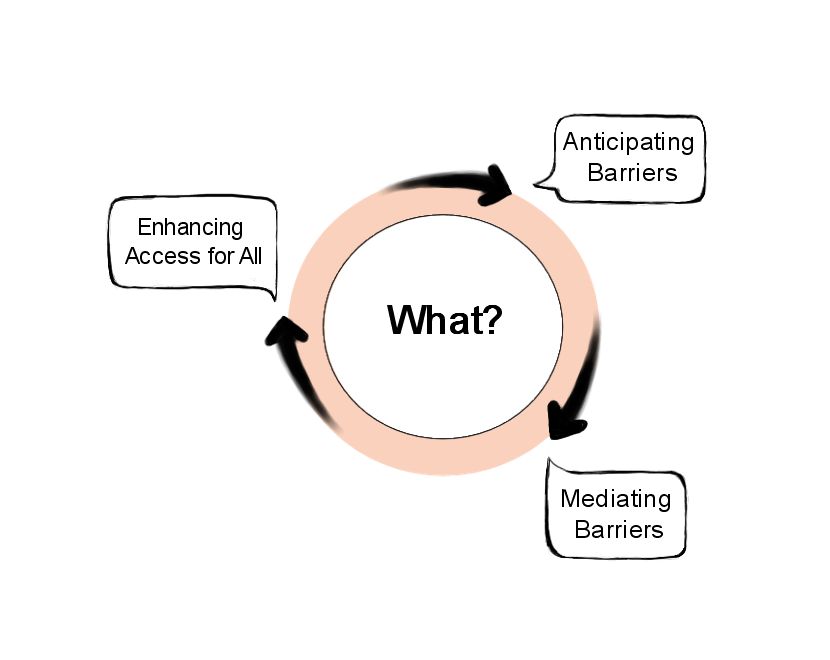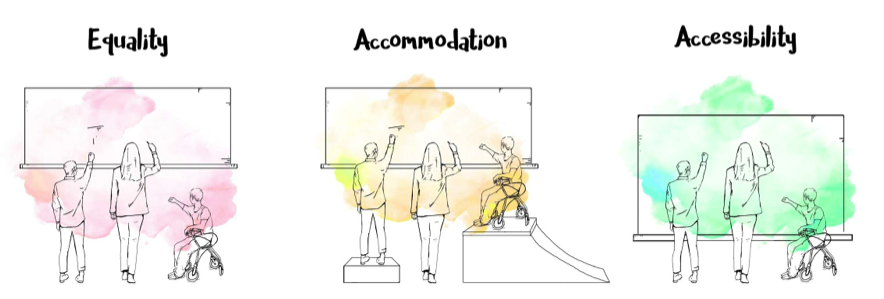What is Accessible Education?
Accessible Education:
Anticipating and mediating social/environmental barriers to enhance access for all learners.
Most instructional staff at McMaster are familiar with McMaster’s (2017) recently revised Academic Accommodation of Students with Disabilities Policy, and the the reactive individual modifications we are asked to implement to support the learning of students registered with Student Accessibility Services (SAS), McMaster’s student accommodation office (e.g. extensions on assignments, alternate ways to participate in class).
This FLEX Forward resource is not about accommodations. Instead, it is focused on accessibility, the proactive identification and mediation of barriers to anticipate and welcome members of our diverse community and increase accessibility for all (McMaster University Policy on Accessibility, 2010).

In this resource, we focus on accessibility in teaching and learning contexts, and use the language of Accessible Education to refer to the process of designing courses and developing a teaching style to equitably meet the learning needs of a diverse student body (Council of Ontario Universities, 2017).
Accessible Education is not a destination. It is an ongoing process that continuously cycles through 3 steps: (1) Anticipating barriers and (2) finding ways to mediate these barriers (3) to enhance access for all.
The image below illustrates the ultimate goal of Accessible Education: the design, creation, and facilitation of accessible educational environments.
| Equality: This image represents a status quo classroom where, due to an exclusionary layout, learners do not have equitable access to the classroom. Some learners can reach the chalkboard to write on it and some cannot. Everyone is treated “the same”, or “equally”, and expected to write on the chalkboard. However, this arrangement is not fair; the chalkboard is accessible to some and too high for others who need to sit while writing. |
| Accommodation: This image shows a classroom where learners with disabilities are raised to a level “learning field” with their peers. They have equitable access to education through the individualized accommodation of a ramp and platform that elevate them to the chalkboard. |
| Accessibility: This image represents Accessible Education – the proactive design of learning environments with a diverse group of learners in mind. Instead of a “one size fits all” approach or providing an individualized accommodation, the arbitrary barrier of chalkboard height is mediated by lowering it and increasing its size so that all learners can access and write on it. |

Continue Your Learning
- Listen to Dr. Philippa Carter define Accessible Education as about enhancing flexibility.
- Hear Dr. Ann Fudge Schormans describe her Accessible Education work with disabled students to anticipate barriers and mediate them through diverse teaching and learning approaches.


